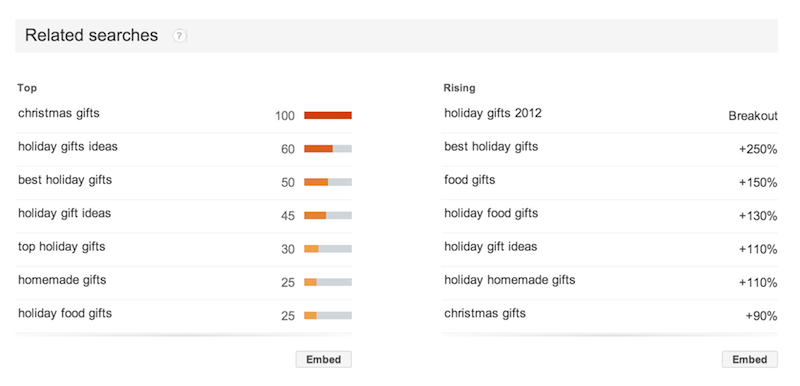For November’s series we’re diving into the exciting world of the holiday season. With Black Friday, Cyber Monday, Christmas and Boxing Day (for our non-American friends) all approaching quickly we’re sharing our favorite tips & tricks for strong holiday-PPC results. So far we’ve covered ad copy and CRO; today we’ll uncover how you can make the daunting task of budgeting for the holidays a little easier!
When it comes to preparing your holiday budgets for PPC, it’s much like planning the same budget for your personal bank account – kinda scary when you think about all the people (campaigns) and gifts (keywords) you need to cover! That was super corny, and I’m honestly just not sorry, because it works.
The trick to determining your paid search budget for this year is to do two things: look at what you did last year and look at how the market has changed this year. Essentially all of the following tips to holiday PPC budgets involve different variations of averages of those two data sets. Pen and paper and spreadsheets ready?!
Look at your own spends from last year; apply average percentage increase from months around it for this year.
Perhaps the simplest way to keep yourself from getting too far in the weeds when it comes to estimating holiday budgets for this year is to quite simply apply this year’s average monthly spend increase to last year’s holiday budget. So let’s say February-October of this year you’ve averaged a 12% increase in monthly budget compared to last year. Last November-January you spent an average of $25,000/month, which means you need $28,000/month to cover holiday spend this year; or $9,000 in additional budget for the whole season (25k * 12% = 3k, 25k + 3k = 28k). If you want to also add a little more buffer, I would round up and say an even $30k/month to accommodate for additional holiday inflation over and above the year over year. This method, of course, assumes no change in your keyword, product or service scope from last year to this year or from the non-holiday to holiday season (think: most B2B lead generation accounts).
Run keywords through Google Trends, then multiply by current or last year’s CTR and some version of average CPC (your own, keyword tool, average of the two…).
This was could get a little confusing guys, but I promise it’ll help! Google Trends is a sweet tool you can utilize to find out what kinds of terms related to holiday gift buying or queries through the season are searched for and how much, in addition to related searches (hint hint – for expanding your keyword scope – screenshot below!) around similar terms. Try to determine just how broad your holiday keyword scope might go, and whether your current keywords got a greater volume of traffic around this time last year. Once you have some estimated search volumes for your account’s keyword set, apply either your current or last year’s CTR (whichever you feel is most applicable to the holiday season) and the average CPC to match (either throw all the new terms in the Keyword Planner and get an average there, plus the average from the terms you’re already covering, or some combination of whatever average CPC you’re most comfortable with), then do the math! Multiply the estimated searches by your potential click-through rate to get clicks, and then multiply by your average CPC to get a possible budget. Then add a little buffer because it’s better safe than sorry…again.
Start where you want to end up (using ROAS estimates and needed revenue – work backwards).
While we’re on the math train, what’s your revenue/return goal for the season? Start at the end and work backwards – duh! Using (again) either current ROAS, or last year’s holiday ROAS averaged with this year’s performance percentage change in the metric (deep breath), or whatever combination of an estimated ROAS you’re comfortable assuming…if you need to make $5 for every $1 you invest in PPC for an ecommerce account and the revenue goal is $500k, then at least plan to spend $100k. Similarly for lead gen, if you know you have a lead goal through the holidays of 1000 leads/month and you get leads at around $150/each during the season, anticipate spending at least $150k. Easy, right? 😉 Check your math, build in buffer, and use estimates and averages for all of these metrics that you and either your client or your supervisor are comfortable with – that’s the key here.
Look at increases made in other channels in preparation for the season, as well.
I certainly would lean more heavily on your current PPC ROAS numbers to determine budgets for the holidays, however I would also recommend you take the time to at least check out what the other marketing channels for your company or client are doing when it comes to holiday budgeting. This is also much more applicable to some verticals than others, but a quick note to keep in mind – if all your other channels pull back budget, ask yourself why and if those reasons apply to PPC (same goes for increases, of course).
Check out competitors’ estimated spends in recent months compared to last year; apply that percentage increase to their estimated spends from last year.
Similar to however you’ve decided to use last year’s data to determine spends for yourself for this year, investigate how your competitor landscape has shifted year over year. Look at the average spend increase or decrease, utilizing any competitor tools you’d like, for your typical holiday contenders for the last year; then use the same tools to see what they did for the holidays last year. A little percentage multiplication action later (same as in tip #1 above for your own spend), and you can see how your competitors might be planning to spend, as well. Is there opportunity to make a move on additional market reach this year? Have they been slowly pulling back for the last quarter? Could mean more potential customers for you, so make sure you’ve got the budget to cover it!
Don’t forget to allow for opening up to holiday-based queries that may not be active throughout the year.
Depending on your vertical, the holidays can mean an expansion of your typical keyword scope to include terminology surrounding said holidays and potentially more direct audience- and purchase-based queries (i.e. ‘holiday gifts for grandparents,’ etc.). You have to keep those keywords in mind as you estimate your necessary budgets, and utilize some of the same tools mentioned above to find out how they’ll alter costs.
Tell us about your favorite ways to help budget accurately for the holiday season! This can be ways you learned from mistakes, or how you’ve found success – either way, share it in the comments section below. Thanks for reading, and good luck in the holiday season!




